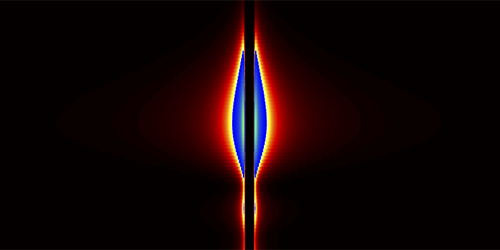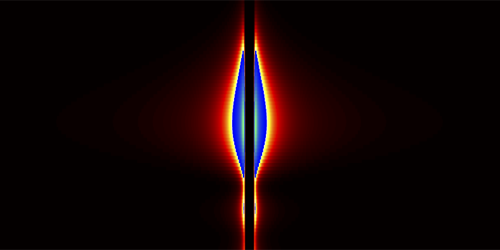A Neat Way to Slow Down Light
When it comes to transmitting information quickly between data processors, photons do better than electrons. For a trivial reason: electrons can’t beat the speed of light. But to store, process, and retransmit this information, that very same light, be it classical or quantum, must also be slowed down and brought to a halt. And these tasks usually require complex tricks. Stefan Kröll and colleagues from Lund University in Sweden have now developed a simple technique for slowing down light in a crystal that relies solely on “burning” a spectral hole in the material and then changing the hole’s width.
The technique involves doing two things to a rare-earth-ion-doped crystal, a promising system for quantum information processing. The first is to fire a laser beam at the crystal to burn a hole in the material’s absorption spectrum, that is, to create a spectral transmission window. The second is to ramp up an applied voltage to reduce the hole’s width. This steepens the refractive-index variation of the crystal across the transmission window, reducing the group velocity of an optical pulse traveling in the crystal, without introducing major pulse distortion or absorption of the pulse energy. The researchers demonstrate that the same method can be used to compress the pulse in time. But it remains to be seen whether the approach can be extended to fully stop the pulse.
This research is published in Physical Review A.
–Ana Lopes
Ana Lopes is a Senior Editor of Physics.





